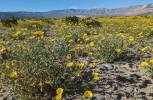Beautiful lawn DIY: 6 steps to success
(BPT) - Has nicer weather inspired you to find ways to make your home more comfortable, attractive and environmentally sustainable while increasing its value? One feature that can achieve all these goals is a healthy lawn.
Installing and maintaining a natural turf lawn is one of the best home improvement investments a homeowner can make, and it’s the perfect warm-weather DIY project. According to Grass Seed USA, a coalition of American grass seed farmers and academics, the ideal lawn planting season is April through the mid-to-end of October, depending on where you live. Installing a beautiful lawn is simple with six easy steps:
Prepare: Preparation is the most critical part of seeding a lawn. The condition of the soil has to be ideal in order for grass seeds to germinate. To get these conditions, remove any remnants of the old lawn. Use a sod cutter allows you to slice off old grass and weeds at the roots. Then turn the soil with a rotary tiller, adding soil and compost in successive layers to achieve an ideal mix. Both sod cutters and tillers can be rented by the hour or by the day at any major home improvement retailer.
Achieve the right pH: No soil is ready for seeds if it doesn't have the right pH. Obtain a soil test kit from your local home improvement store. To take a soil pH test, gather soil samples from several places around the area you’ll be seeding.
The pH scale measures acidity and alkalinity, from 0 to 14, with 7.0 being neutral. Grass grows best in soil that has a pH between 6.0 and 7.5. If your soil is too acidic (below 6.0) - a common problem in cooler wet climates like the Northwest and Southeast - you can add lime to bring it up. If it's mildly alkaline (7.5 to 8.0) - typical of the Midwest - a little peat moss, which is naturally acidic, should correct it. Soil that is very alkaline (more than 8.0), which is more likely to exist in dry, hot climates, needs sulfur.
Fertilize: After your soil has achieved the perfect pH, use a broadcast spreader to apply starter fertilizer to the entire area. Make sure the spreader is adjusted to distribute at the rate outlined on the fertilizer packaging. Look for fertilizer containing nitrogen, phosphorus and potassium at even ratios (such as 10N-10P-10K percentages).
Purchase the right grass seed: One key factor in choosing the right grass seed simply depends on where you live. For the northern region of the country, you will want a cool-season grass like fine and tall fescues or perennial ryegrass. This type of turf grows the most during the cool seasons of spring and fall, and therefore, should be seeded in the spring or fall months. These grasses are typically more shade-tolerant as well.
Warm-season grasses grow in warmer regions of the country. These include grasses like St. Augustine, Bermuda, buffalo, centipede and zoysia. Warm-season grasses achieve their peak growth when summer hits its stride and typically require full sun to thrive. Unlike cool-season turf, warm season turfgrasses should be seeded in the summer months.
Disperse grass seed: Using your broadcast spreader, disperse grass seed evenly over the soil. For larger lawns, use a walk-behind spreader. Be sure to apply an even amount of seed to the entire area. Then, take a plastic leaf rake, turn it upside down, and use the back of the tines to gently work the seeds into the soil. Make short, light strokes. Avoid long sweeping motions, which can redistribute the seeds and cause the grass to grow in uneven patches.
Water: Immediately after dispersing the seeds, lightly water the area with an oscillating-type sprinkler. Set up one or more sprinklers, or move the sprinkler to ensure that the entire area gets dampened. For the first eight to 10 days, water two or three times daily, but only for 5 to 10 minutes. Avoid overwatering, which may wash away the seeds.
Once the grass sprouts, water once a day for 15 to 30 minutes. It's typically best to water in the morning, when there's less evaporation and wind is minimal. Avoid watering in the evening; it can lead to fungal diseases. In the event of a summer rain storm, there is no need to water.























